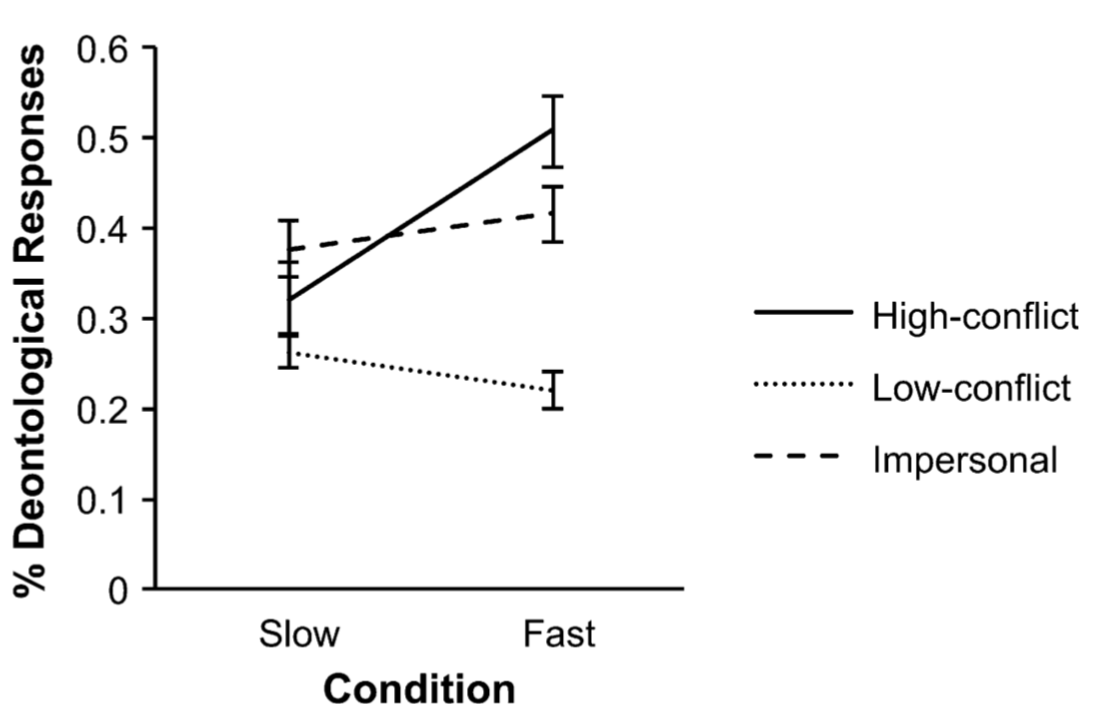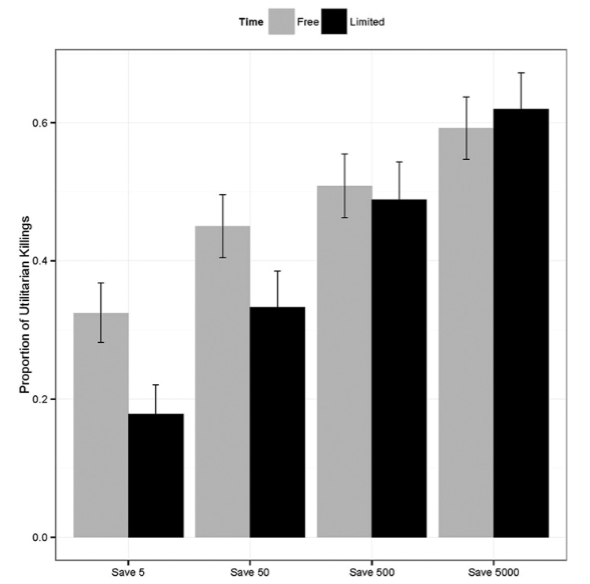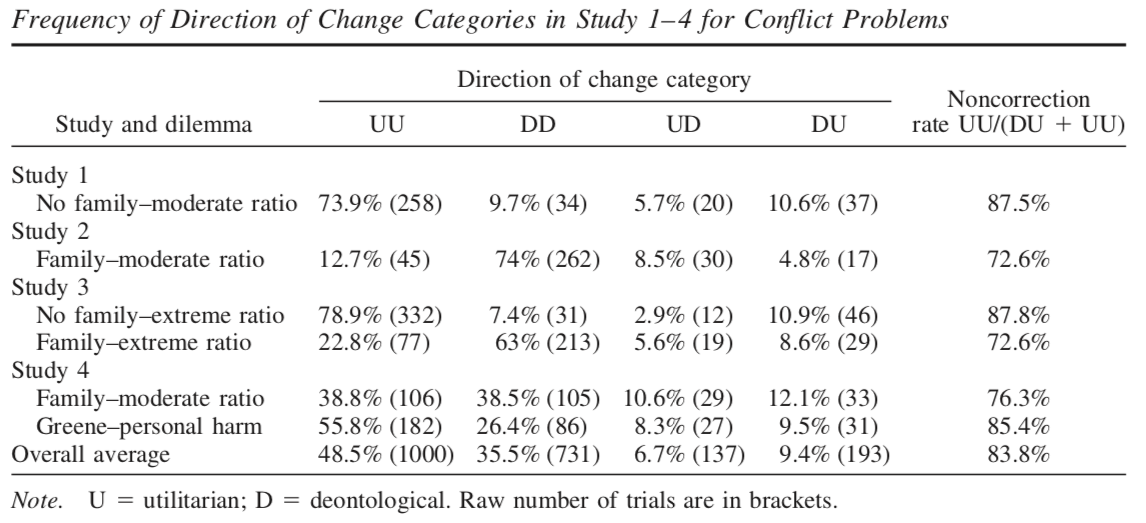Click here and press the right key for the next slide.
(This may not work on mobile or ipad. You can try using chrome or firefox, but even that may fail. Sorry.)
(If the slides don’t work, you can still use any direct links to recordings.)
also ...
Press the left key to go backwards (or swipe right)
Press n to toggle whether notes are shown (or add '?notes' to the url before the #)
Press m or double tap to slide thumbnails (menu)
Press ? at any time to show the keyboard shortcuts
On Second Thoughts
1. Ethical judgements are explained by a dual-process theory ...
1.a ... where a faster process is affective, and
1.b less consequentialist than a slower process.
2. The fast process is unlikely to be reliable in unfamiliar* situations.
3. Therefore, we should rely less on the faster (and less consequentlist) process in unfamiliar* situations.
‘The Central Tension Principle:
Characteristically deontological judgments are preferentially supported by automatic emotional responses processes, while characteristically consequentialist judgments are preferentially supported by conscious reasoning and allied processes of cognitive control’
Greene, 2014 p. 699
| content | process |
| deontological | fast |
| consequential | slow |
| impetus | fast |
| Newtonian | slow |
evidence for fast = nonconsequentialist

Suter & Hertwig, 2011 figure 1
‘participants in the time-pressure condition, relative to the no-time-pressure condition, were more likely to give ‘‘no’’ responses in high-conflict dilemmas’

preliminary objection


Trémolière and Bonnefon, 2014 figure 4
main objection
evidence against fast = nonconsequentialist
Stimulus: ethical dilemma [family / no-family] [moderate / extreme ratio]
Initial response under time pressure + cognitive load
Confidence judgement
Solve dot task [end cognitive load task]
Second response: unbounded time + no cognitive load
Confidence judgement
Bago & de Neys, 2019 table 2

Bago & de Neys, 2019 table 2
‘Our critical finding is that although there were some instances in which deliberate correction occurred, these were the exception rather than the rule. Across the studies, results consistently showed that in the vast majority of cases in which people opt for a utilitarian response after deliberation, the utilitarian response is already given in the initial phase’
Bago & de Neys, 2019 p. 1794
Objection: consistency effects? No!
faster = less consequentialist?
Suter & Hertwig, 2011 : yes
Bago & de Neys, 2019 : no
‘even if we were to unequivocally establish that utilitarian responses take more time than deontological responses, this does not imply that utilitarian responders generated the deontological response before arriving at the utilitarian one. They might have needed more time to complete the System 2 deliberations without ever having considered the deontological response’
Bago & de Neys, 2019 p. 1783
possible resolution: preference for inaction under time pressure?
‘unless you’re prepared to say “yes” to the footbridge case [i.e. Drop], your automatic settings are still running the show, and any manual adjustments that you’re willing to make are at their behest’
Greene, 2014 p. 723
1. There is a puzzle about apparently inconsistent patterns in judgement (switch-drop).
2. We can solve the puzzle by invoking a dual-process theory ...
2.a ... where one process is faster; and
2.b the faster process is affective and
2.c less consequentialist.
3. The faster process is unlikely to be reliable in unfamiliar* situations.
4. Therefore, we should rely less on the faster (and less consequentialist) process in unfamiliar* situations.